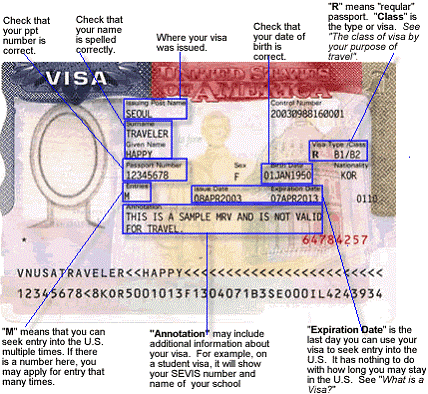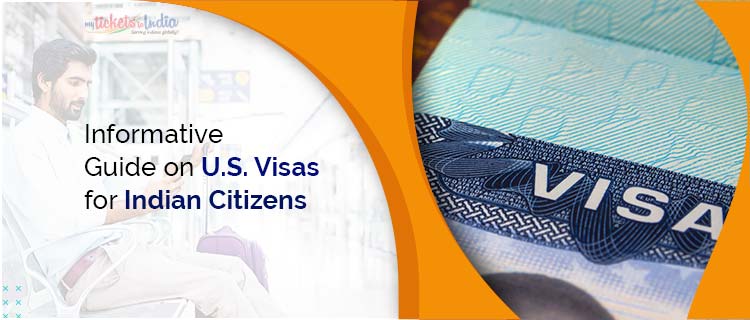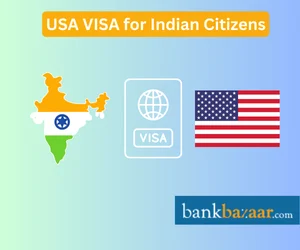Essential Requirements for US Visas For Indian Citizens
Unlocking Opportunities: Necessary Info on US Visas for Indian Citizens
Maneuvering the complexities of united state visa choices is necessary for Indian residents aiming to explore possibilities in the United States. With different classifications varying from temporary visitor visas to pathways for permanent residency, understanding the nuances of each can substantially influence one's journey. This conversation will highlight vital information, consisting of application procedures and eligibility criteria, that can equip people in their search of brand-new experiences. As we unload these crucial elements, the inquiry develops: what techniques can one use to enhance their chances of a successful application?
Review people Visa Types
When traversing the complex landscape people migration, comprehending the various kinds of visas readily available is crucial for Indian residents looking for entrance into the United States. The US migration system is largely categorized into 2 wide classifications: immigrant visas and non-immigrant visas.
Immigrant visas are marked for those intending to live permanently in the US - US Visas For Indian Citizens. These include family-sponsored and employment-based visas, where candidates normally require a sponsor. Non-immigrant visas, on the other hand, deal with people seeking momentary residence, such as tourists, organization site visitors, and those taking a trip for certain purposes like job or research
Within the non-immigrant classification, a number of visa types exist, including B-1/ B-2 for business and tourist, H-1B for specialty professions, L-1 for intra-company transferees, and O-1 for individuals with remarkable capabilities. Each visa has unique qualification needs and application processes, necessitating comprehensive research to establish the appropriate group.
Comprehending these categories is essential for Indian citizens, as it allows them to browse the application procedure better, guaranteeing they choose the appropriate visa kind to fulfill their particular demands and purposes.
Pupil Visa Options
For Indian residents desiring study in the United States, trainee visas present a vital pathway to seek scholastic possibilities. The primary visa classifications for pupils are the F-1 and M-1 visas.
The F-1 visa is assigned for scholastic students signed up in a full-time program at a certified organization, such as colleges and universities. US Visas For Indian Citizens. This visa enables students to participate in on-campus work and, under specific conditions, join optional functional training (OPT) after completing their degree, providing important job experience in their field of research study
Alternatively, the M-1 visa is planned for vocational or non-academic programs. It satisfies pupils pursuing technical or employment training, enabling them to enlist in non-degree programs. M-1 visa holders might join practical training, however it is generally a lot more limited contrasted to the F-1 classification.
To obtain a pupil visa, applicants should protect admission to an U.S. establishment, receive a Type I-20, and demonstrate economic ability to support their education and living costs. Understanding these visa options is significant for Indian citizens intending to begin their academic trip in the USA.
Job Visa Categories
Many Indian people looking for employment possibility in the USA might think about various job visa groups tailored to different expert needs and qualifications. The most noticeable job visa is the H-1B visa, developed for experienced employees in specialized line of work calling for a greater education and learning degree or its equivalent. It allows united state employers to momentarily employ international employees, with a cap on the number of visas released every year.
An additional vital group is the L-1 visa, which helps with the transfer of workers within multinational companies. The L-1A visa is for supervisors and executives, while the L-1B visa is for staff members with specialized expertise.
The O-1 visa satisfies individuals with amazing abilities in their area, including scientific research, arts, or company. For farming or seasonal job, the H-2A and H-2B visas are available, allowing employers to employ international employees for short-term placements.
Family-Based Migration
Family-based migration provides a path for united state citizens and lawful irreversible citizens to reunite with their relatives from India. This immigration category is essential for preserving domestic bonds and helping with the assimilation of family participants right into American culture. United state people can petition for prompt relatives, consisting of spouses, kids, and parents, without dealing with annual limits on visas. This expedited process significantly minimizes waiting times for these close household connections
In contrast, legal irreversible residents might sponsor partners and unmarried children, yet they are subject to yearly caps, leading to much longer wait times. The family-sponsored migration system is split into 2 main groups: immediate relatives and household choice groups. The previous includes those who have a straight partnership with a united state citizen, while the last includes more far-off loved ones, such as siblings and wedded children of residents, and kids of authorized irreversible homeowners.
For Indian residents seeking family-based immigration, understanding the subtleties of this system is vital. Correct documents and adherence to application protocols are vital for effective sponsorship. By steering through these intricacies, family members can function towards rejoining and constructing their lives together in the United States.
Long-term Residency Process
The procedure of obtaining irreversible residency in the USA entails several vital visa categories tailored for Indian citizens. Understanding the application actions, consisting of essential documents and qualification criteria, is crucial for a successful result. Furthermore, possible candidates ought to know the expected timeline and certain needs connected with each classification.
Visa Categories Introduction
While traversing the intricacies of the U.S. immigration system, Indian people looking for long-term residency must acquaint themselves with numerous visa groups tailored to different situations. The main path for long-term residency is with employment-based visas, which are categorized into numerous choices, including EB-1 for individuals with phenomenal capacities, EB-2 for specialists holding sophisticated degrees, and EB-3 for competent employees. Each category has specific eligibility demands and handling times.
Family-sponsored visas are an additional notable avenue, enabling U.S. residents and legal irreversible locals to seek for loved ones. This consists of immediate loved ones, such as spouses and kids, and other family members classifications, which may entail much longer waiting periods.

Recognizing these visa classifications is vital for Indian residents, as they considerably affect the technique for obtaining irreversible website residency in the United States. Each classification's nuances and requirements demand mindful factor to consider to straighten with individual circumstances and objectives.
Application Process Actions
Guiding the application procedure for irreversible residency in the USA entails a number of vital steps that have to be carefully followed to guarantee an effective result. The journey normally begins with establishing the ideal migration classification, such as employment-based or family-sponsored visas. Applicants must collect vital documentation, including proof of eligibility, economic statements, and individual identification.
As soon as the category is recognized, the following step is to submit the Kind I-130 (Application for Alien Loved One) or Form I-140 (Immigrant Petition for Alien Employee), depending upon the basis of the application. Complying with the authorization of the request, applicants will need to complete the National Visa Center (NVC) processing by submitting the needed fees and types.
Next off, the candidate has to undertake a medical checkup and obtain police clearance certifications. As soon as these are completed, a meeting will certainly be set up at the united state consulate or embassy. It is essential to prepare thoroughly for this interview, as it can substantially affect the decision on the application. Finally, upon authorization, the applicant will get their permit, giving them irreversible residency in the USA.
Timeline and Requirements
Charting the timeline and needs for getting long-term residency in the USA is necessary for Indian citizens seeking to develop a long-term visibility. The procedure mainly pivots on employment-based or family-sponsored paths, each with certain prerequisites and timelines.
For employment-based immigration, the process usually starts with a labor accreditation, which can take numerous months. Once approved, the employer submits a Type I-140, Immigrant Petition for Alien Employee, which can take an extra six months to a year, depending on the processing. Complying with I-140 authorization, candidates may need to wait for their top priority day to come to be existing, which can vary significantly based on the applicant's classification and native land.
For family-sponsored migration, U.S. citizens can seek for instant family members, which typically results in faster processing. Other household classifications may involve much longer wait times due to annual caps.
Application Treatments
Understanding the application treatments for US visas is vital for Indian residents looking for entrance into the United States. This section will supply a review of different visa classifications and describe the step-by-step process for applying. By adhering to these guidelines, candidates can browse the intricacies of the visa successfully.
Visa Categories Introduction

Non-immigrant visas, such as B-1/ B-2 for company and tourist, F-1 for academic research study, and H-1B for specialized employment, enable short-term stays. Candidates have to demonstrate their intent to return to India after their see.
On the other hand, immigrant visas, consisting of family-sponsored and employment-based classifications, provide a path to long-term residency. These visas typically call for sponsorship from a loved one or company in the U.S., in addition to a strenuous application process.
Furthermore, there are unique programs, such as the Diversity Visa Lottery, targeted at advertising diversity among immigrants. Each visa classification has details qualification requirements, called for documents, and application treatments. Acquainting oneself with these classifications is important for potential travelers and immigrants, as it establishes the foundation for an effective visa procedure. Comprehending these choices can substantially enhance the possibilities of achieving preferred end results in the united state
Step-by-Step Refine
Commonly, the application process for united state visas entails several vital steps that candidates must carefully comply with to ensure a smooth experience. The very first step is to determine the suitable visa category based on the objective of traveling, such as job, research study, or tourism. As soon as the category is recognized, candidates should finish the online DS-160 kind, providing accurate individual information and travel details.
After submitting the DS-160, candidates must pay the visa fee, which varies by visa kind. Next, schedule an appointment for a visa interview at the closest U.S. Consular office or Consular Office. It is crucial to prepare for the interview by gathering required files, including a valid key, visa confirmation, fee payment invoice, and any supporting paperwork specific to the visa group.
On the day of the interview, arrive promptly and outfit properly - US Immigration India. Throughout the meeting, be prepared to answer inquiries concerning your traveling intentions, financial security, and ties to India. If approved, the visa will certainly be marked in the key, allowing for travel to the United States. Complying with these actions assures an efficient and efficient visa procedure for Indian people
Tips for an Effective Application
As you begin on the journey to safeguard an US visa, it is important to approach your application with precise focus to information and a clear understanding of the needs. Begin by thoroughly researching the specific visa category that straightens with your objective of traveling, whether it be for job, research study, or tourism. Each visa type has unique requirements and documentation requirements.
Make sure that all forms are completed accurately and honestly. Little errors or omissions can lead to hold-ups or even denials. It is a good idea to gather all essential sustaining documents, including economic declarations, employment letters, and evidence of connections to India, which show your intent to return post-visit.
Get ready for your visa interview by exercising reactions to typical concerns associated to your itinerary and background. Confidence and clarity can greatly affect the policeman's perception. Finally, think about looking for aid from reliable migration professionals if you feel overloaded.
Regularly Asked Inquiries
What Are the Handling Times for United States Visas?

Can I Change My Visa Status While in the United States?
Yes, people can change their visa standing while in the United States, given they meet qualification requirements and comply with correct procedures. It is critical to submit the proper application with united state Citizenship and Immigration Provider (USCIS)
Are There Age Limits for United States Visa Candidates?
There are usually no details age restrictions for U.S. visa candidates; nonetheless, certain visa categories may have age-related eligibility standards. It is essential to evaluate the requirements for each visa type to assure compliance.
How Can I Appeal a Visa Rejection Choice?
To appeal a visa rejection, assess the consular officer's reasons, collect supporting documentation, and submit an official attract the ideal authority, ensuring to follow specified timelines and procedural demands for the charm process.